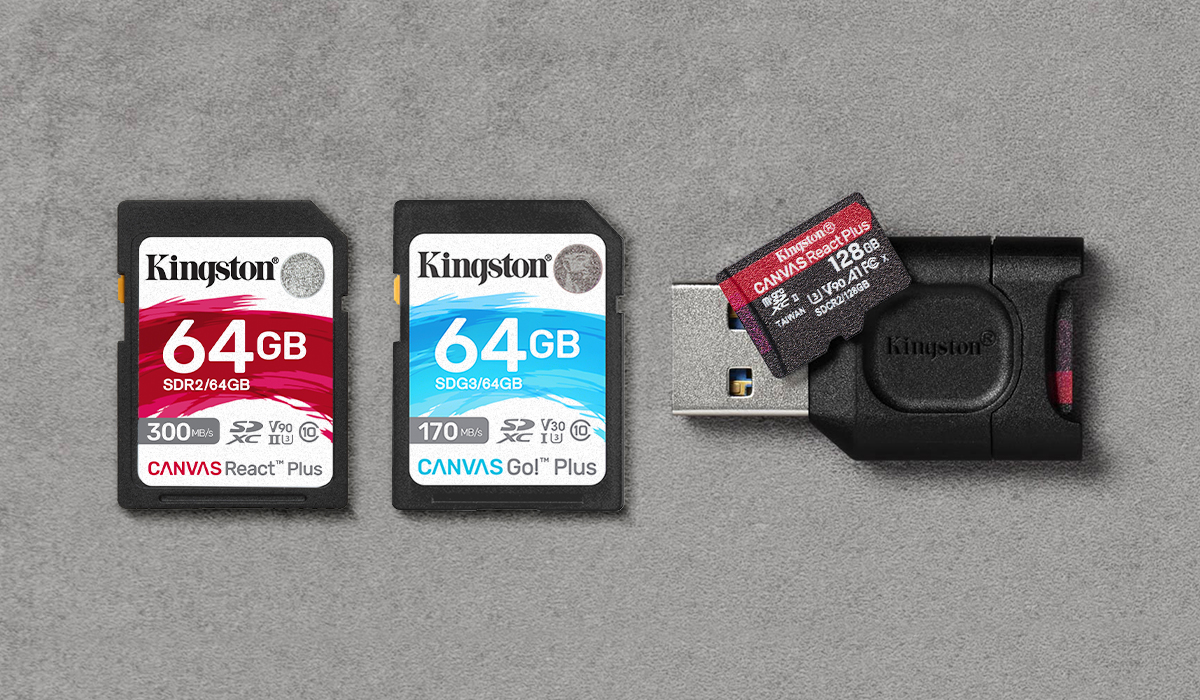
Why do cards need such speeds?
This is a rhetorical question. Let's take a common example: a SLR camera is not the first freshness and sequential continuous shooting ... In this case, the camera will fill its internal buffer and try to write it to the card. To do this, she needs either a fast flash drive, or you wait for the buffer to merge onto the card. In theory and practice, cameras record quickly enough, but they need a high-speed memory card. "Old Man" Nikon D800 takes photos in uncompressed form at 50-60 MB. The D850 already operates in sizes under 100 MB. So transferring a buffer consisting of a dozen photos will require maximum speeds from the memory card. On average, cards can write at a speed of 40-50 MB / sec. This means that to transfer 500-1000 MB you will hang in standby mode for up to 25 seconds. You will not be able to use the camera during this time. the buffer will be full.Or another example from the category of those who like to shoot video: the same cameras write in HD or 4K resolution, giving out a constant stream of up to 144 Mbps. In terms of the usual megabytes, this is up to 18-20 MB / sec. It seems to be not much, or less than the size of the buffer writing to the card. But, continuous continuous shooting is performed for a few seconds, and then you are looking for a new target, the video is shot for at least ten seconds, and more often in minutes. Your card must be able to continuously write at a speed of at least 20 MB / sec for minutes! Cameras with streams up to 400 Mbit / s are included in a separate article. For them, the choice of the carrier is extremely important. You will hesitate or take the manufacturers 3-5 echelon at their word and be disappointed with frame drops when shooting video.giving out a constant stream of up to 144 Mbps. In terms of the usual megabytes, this is up to 18-20 MB / sec. It seems to be not much, or less than the size of the buffer writing to the card. But, continuous continuous shooting is performed for a few seconds, and then you are looking for a new target, the video is shot for at least ten seconds, and more often in minutes. Your card must be able to continuously write at a speed of at least 20 MB / sec for minutes! Cameras with streams up to 400 Mbit / s are included in a separate article. For them, the choice of the carrier is extremely important. You will hesitate or take the manufacturers 3-5 echelon at their word and be disappointed with frame drops when shooting video.giving out a constant stream of up to 144 Mbps. In terms of the usual megabytes, this is up to 18-20 MB / sec. It seems to be not much, or less than the size of the buffer writing to the card. But, continuous continuous shooting is performed for a few seconds, and then you are looking for a new target, the video is shot for at least ten seconds, and more often in minutes. Your card must be able to continuously write at a speed of at least 20 MB / sec for minutes! Cameras with streams up to 400 Mbit / s are included in a separate article. For them, the choice of the carrier is extremely important. You will hesitate or take the manufacturers 3-5 echelon at their word and be disappointed with frame drops when shooting video.and then you look for a new target, the video is filmed for at least ten seconds, and more often in minutes. Your card must be able to continuously write at a speed of at least 20 MB / sec for minutes! Cameras with streams up to 400 Mbit / s are included in a separate article. For them, the choice of carrier is extremely important. You will hesitate or take the manufacturers 3-5 echelon at their word and be disappointed with frame drops when shooting video.and then you look for a new target, the video is filmed for at least ten seconds, and more often in minutes. Your card must be able to continuously write at a speed of at least 20 MB / sec for minutes! Cameras with streams up to 400 Mbit / s are included in a separate article. For them, the choice of the carrier is extremely important. You will hesitate or take the manufacturers 3-5 echelon at their word and be disappointed with frame drops when shooting video.
Popular action cameras for 4K shooting use a bit rate of up to 100 Mbps, with the lower limit also highlighted in a separate paragraph and stated at least 60 Mbps. As you can see, consumer demands are growing along with the capabilities of devices that shoot videos and photos, and manufacturers are trying to keep up.
High Speed Kingston SD Cards
Canvas React Plus Kit with a capacity of 128 GB (MLPMR2 / 128GB) , microSD form factor with a USB-> MicroSD card reader and a MicroSD-> SD adapter.

- Comes with a MobileLite Plus microSD Reader;
- Class 10, UHS-II, U3, V90, A1;
- Support for A1 apps for Android;
- 285 / 165MB / s read / write.
Canvas React Plus Kit, 64GB (MLPR2 / 64GB) SD with UHS-II USB-> SD card reader.
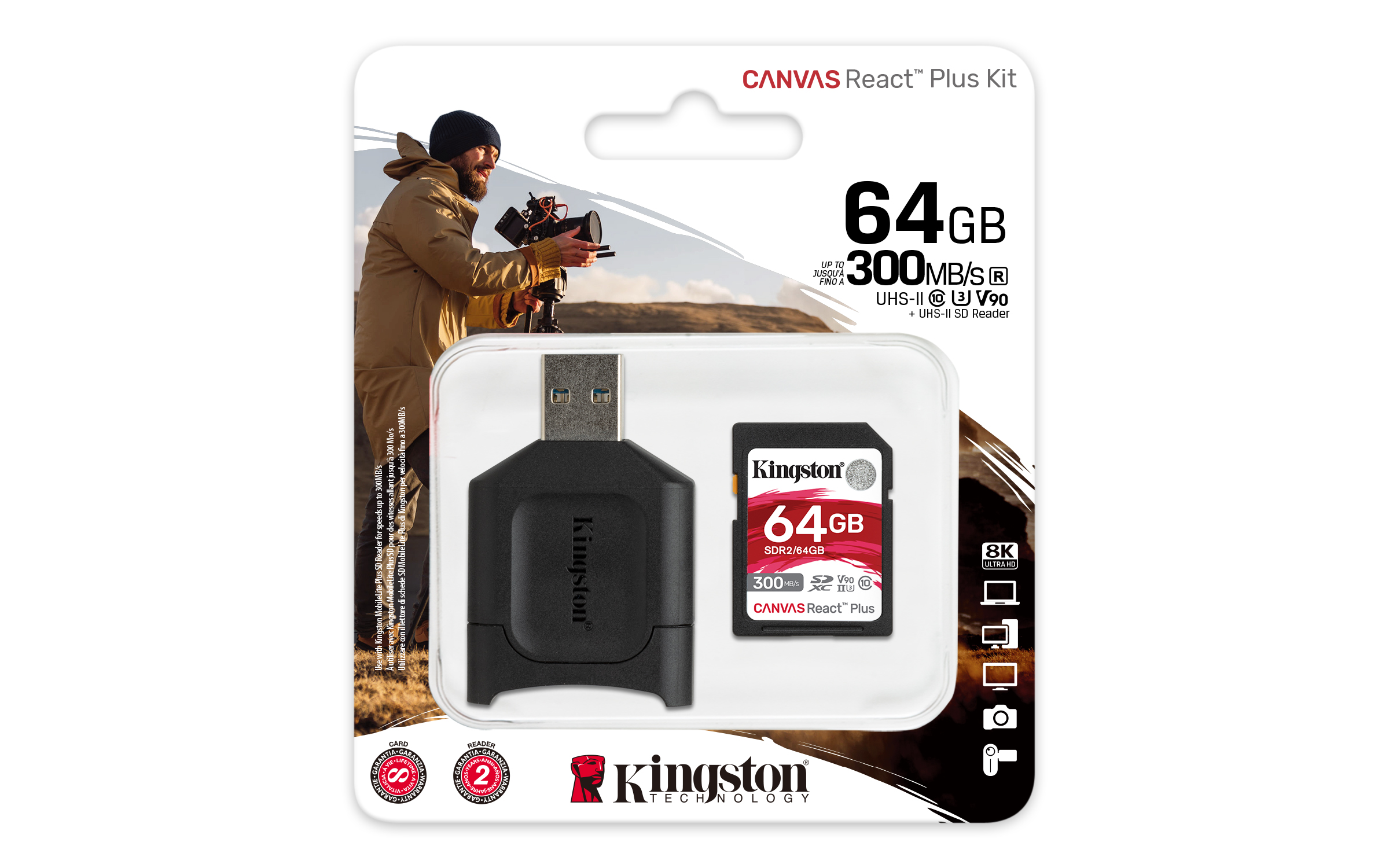
- MobileLite Plus SD Reader included;
- Class 10, UHS-II, U3, V90;
- 300 / 260MB / s read / write.
Canvas Go! Plus SD 64GB (SDG3 / 64GB) , SD form factor.

- Class 10, UHS-I, U3, V30;
- 170 / 70MB / s read / write.
Card formats and standards
The apparent simplicity of memory cards hides significant differences. Like any other device, cards vary in geometric dimensions and supported standards. And in order for the user to put together a puzzle of abbreviations of standards, or vice versa, everything is completely confused, we will carry out a little explanatory work.
In the early days of memory cards, everything was divided into classes. The familiar characteristics included read and write speed. But it was not like this for a long time, until the higher forces wanted to make life easier for us, users, or, more precisely, the choice.
This is due to the ubiquitous distribution of electronics, from smartphones and cameras to laptops, drones and video recorders. The operation of these devices depends directly on the cards. It's not just that manufacturers recommend certain types and speeds of cards, and here's why ... Any technically complex device, the work of which is to read and write data, requires a certain class of performance. And these classes are formed by a group of companies, consisting of eight hundred organizations. But if the matter concerned only one standard, then you are mistaken.
There are always difficulties in reaching a consensus in a group, so one large group is divided into smaller ones and they already come up with subgroups of classes. For example, how to identify the most suitable cards for smartphones, where random read and write operations are more common, or cameras? What's in them? For digital cameras, linear read and write will be important. Let's try to briefly describe the situation with the designation of specifications on the cards.

For nearly 20 years, the SD Association has created and expanded the technical standard for compact media. This work has resulted in many subclasses and specifications. This was because the bands wanted to see new and distinctive logos on new maps. The desire horrified end users, and now even a specialist in this field will not immediately give a decryption of the inscriptions on the SD card.
Form Factor SD
Everything is simple here! There are three card sizes, with the most common being two: microSD and SD. The first ones are installed in phones, tablets, DVRs, action cameras and through adapters to other devices. The second, SD, are often found in cameras and camcorders.

SD card on the left, microSD on the right
Differences in volume
Even in such a simple matter as volume, the association came up with 4 types of formats. This is due to both user-accessible space and file system support.
- Up to 2 GB - SDSC SD Cards (Standard Capacity, FAT16)
- 2GB to 32GB - SDHC (High Capacity, FAT32) SD Cards
- Up to 2TB - SDXC (Expanded Capacity, exFAT) SD Cards
- 2TB to 128TB - SDUC (Ultra Capacity, exFAT) SD Cards
However, no one prohibits you from reformatting cards to another format. The use of compatible cards with the standard below is allowed. So, if the device supports one major format, then the minor ones will automatically work in it. But with SDHC support, there is no compatibility with older formats.
Speed classes
Throughout its history, the SD Association has introduced about a dozen designations for the speed of cards, differentiating them by areas of application. The normal speed class is divided into 4 subclasses: C2, C4, C6, C10. It denotes the minimum linear write speed in MB / sec. Modern SD cards are almost all C10 compliant.
UHS speed class
Divided into 2 categories: UHS Speed Class 1 and UHS Speed Class 3.
- UHS Speed Class 1 - denotes the minimum linear recording speed of at least 10 MB / s;
- UHS Speed Class 3 - denotes a minimum linear recording speed of at least 30 MB / sec.
Communication bus
Another parameter of maximum bandwidth, but now it tells us about the supported connection between the client and the card. UHS-II has 2 rows of contacts, UHS-I one.

- UHS-I - half-duplex data transfer rate up to 104 MB / s;
- UHS-II - half-duplex data transfer rate up to 312 MB / s;
- UHS-III - up to 624 MB / s half-duplex data transfer rate
Video recording speed class
Another label with an inscription, talking about the class of the card, which works in a camcorder, DVR, action camera or camera. Introduced to visually determine the minimum video recording speed by the buyer.
- V6 - sequential write speed above 6 MB / sec;
- V10 - sequential write speed above 10 MB / s;
- V30 - sequential write speed above 30 MB / sec;
- V60 - sequential write speed above 60 MB / sec;
- V90 - sequential write speeds over 90 MB / sec.
Application use class
A relatively new class that talks about adapting the map to work with applications. Theoretically, there is a grain of wisdom in this standard, but its importance is often exaggerated. The fact is that it is generally accepted that the operation of applications is demanding on frequent, random read and write requests. It's difficult to judge, but let's look at the statement objectively. The iOS operating system disappears immediately. Apple has eliminated even hints of memory card support in its devices. Android smartphones and tablets are another matter. But here, too, some manufacturers impose their interface, for example, top-end Huawei phones. The rest are still holding on to a group and are building a tray with a card into smartphones, but again, installing a second SIM card officially deprives you of the opportunity to use additional memory.In general, users are more likely to transfer undemanding and capacious applications to the SD card: recording photos / videos, maps, navigation, etc. And they work on the principle of linear writing or reading. In general, it is not so and often there are increased requirements for cards for random operations with small volumes.
- A1 – , 1500 IOPS, , 500 IOPS, , 10 /;
- A2 — , 4000 IOPS, , 2000 IOPS, , 10 /.

Canvas React Plus Kit with a capacity of 128 GB (MLPMR2 / 128GB), microSD form factor with a USB-> MicroSD card reader and a MicroSD-> SD adapter.
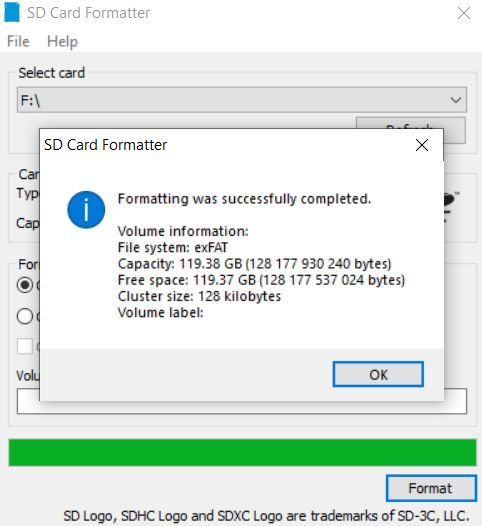
After formatting to exFAT, the capacity was 119.37 GB.
Canvas React Plus Kit, 64GB (MLPR2 / 64GB), SD form factor with UHS-II USB-> SD card reader.
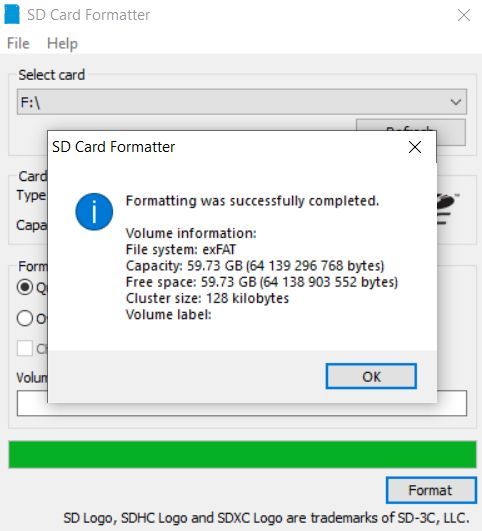
After formatting to exFAT, the capacity was 59.73 GB.
Canvas Go! Plus SD 64GB (SDG3 / 64GB), SD form factor.
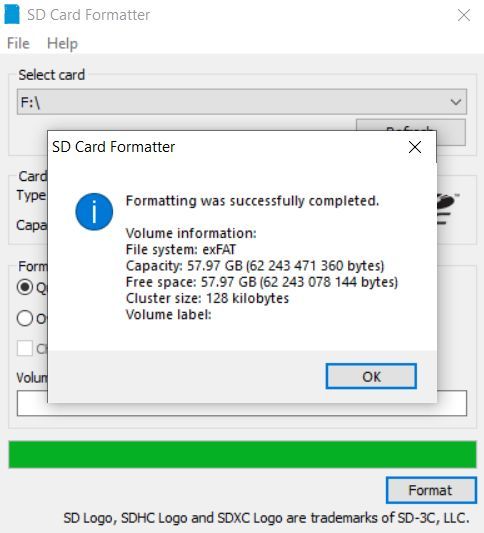
After formatting to exFAT, the capacity was 57.97 GB.
Testing technique
The topology of the structure of SD cards does not provide for the use of a write or read buffer, as well as multithreading. From a constructive point of view, it is a simple linear recording device. And although it seems to us that the device is simple, in fact it is a circuit consisting of a controller and blocks of NAND memory. The main trick is in the controller. The better and more progressive the controller is used, the faster the card works, provided there is high-speed NAND.
The test bench included a modern AMD platform with an ASUS ROG Strix TRX40-E Gaming motherboard, an AMD Ryzen Threadripper 3970X processor, USB 3.2 Gen2 ports, an ASUS Radeon RX 5700 video card, 16 GB Kingston DDR4-4000 memory. The cards were installed in complete card readers. Canvas Go! Test Plus SD was launched in conjunction with the MobileLite Plus SD Reader.
Memory cards were formatted using the SD Memory Card Formatter 5.00 utility developed by the SD Association.
Test results
AS SSD Benchmark
Left to Right: Canvas React Plus Kit 128GB (MLPMR2 / 128GB), Canvas React Plus Kit 64GB (MLPR2 / 64GB), Canvas Go! Plus SD 64GB (SDG3 / 64GB).
- Sequential read / write test;
- Random read / write test for 4 KB blocks;
- Random read / write test of 4 KB blocks (Queue depth 64);
- Read / write access time measurement test;
- The final result in conventional units;
- Copy Benchmark evaluates the speed of work and the time spent on it when copying different groups of files (ISO image, folder with programs, folder with games).

CrystalDiskMark
- Sequential read / write with 8 depth.
- Sequential read / write with 1 depth.
- Random read / write in 4 kb blocks with a depth of 32 and 16 threads.
- Random read / write in 4 kb blocks with a depth of 1.
From left to right: Canvas React Plus Kit with 128GB (MLPMR2 / 128GB), Canvas React Plus Kit with 64GB (MLPR2 / 64GB), Canvas Go! Plus SD 64GB (SDG3 / 64GB)

HD Tune Pro 5.75
- The linear speed of reading and writing in blocks of 64 KB.
- Access time.
- Advanced read and write tests
- Tests work with different block sizes, as well as real speed for a 16 GB file.
From left to right: Canvas React Plus Kit with 128GB (MLPMR2 / 128GB), Canvas React Plus Kit with 64GB (MLPR2 / 64GB), Canvas Go! Plus SD 64GB (SDG3 / 64GB).

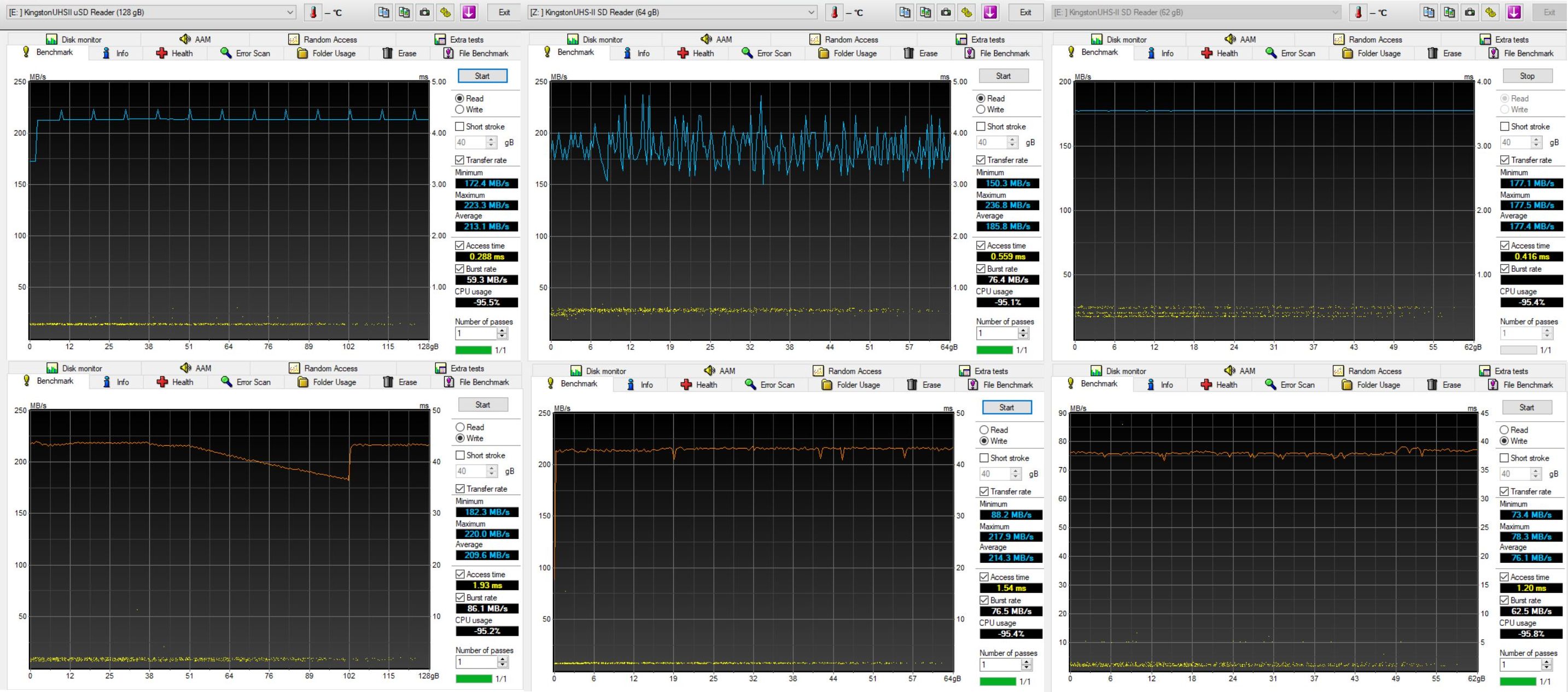

H2Test
- Allows you to estimate the average speed of reading and writing to a disk, giving information in MB / sec.
From left to right: Canvas React Plus Kit with 128GB (MLPMR2 / 128GB), Canvas React Plus Kit with 64GB (MLPR2 / 64GB), Canvas Go! Plus SD 64GB (SDG3 / 64GB).

conclusions
Canvas React Plus Kit 128GB (MLPMR2 / 128GB)
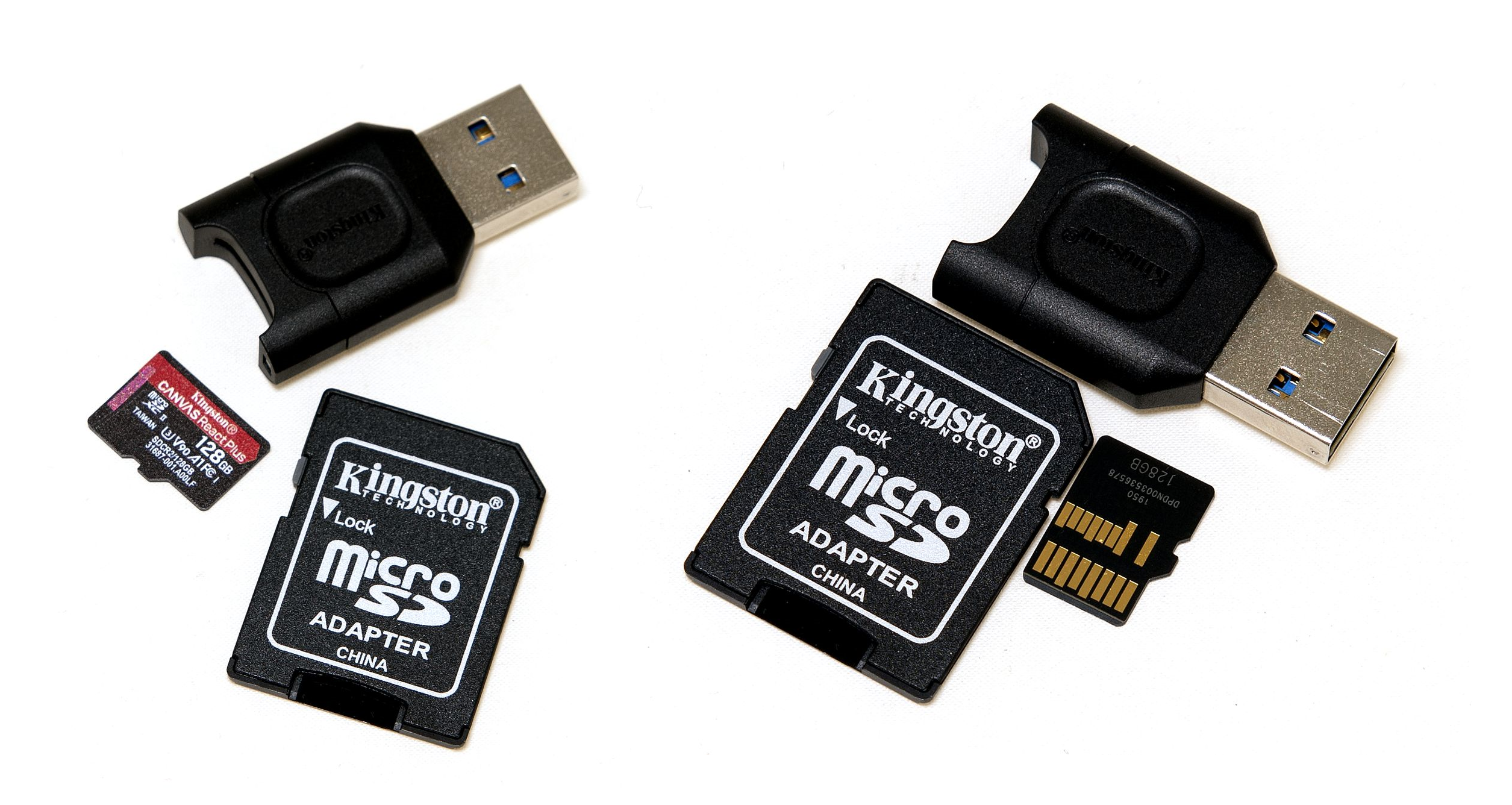
An expensive microSD card for discerning consumers. The set includes a high-speed adapter for fast reading from a card via USB. Be careful, SD-> microSD supports UHS-I standard, its speed will be limited when using. The card provides phenomenal speeds for its class: linear read speed 267-290 MB / s, write speed - 218-228 MB / s. On random operations, it develops from 2.8 to 12.6 MB / sec. The minimum price on Yandex.Market is from 7150 rubles for June 2020 in Moscow. According to the Canvas React Plus Kit tests, a very versatile SD card. Its performance indicates a good suitability for work and as a storage system for mobile phones (maps, navigation, photos, videos), and for high bitrate for video recording.It is the versatility for various tasks, together with high read and write speeds, that makes the Canvas React Plus Kit stand out.
Canvas React Plus Kit 64GB (MLPR2 / 64GB)
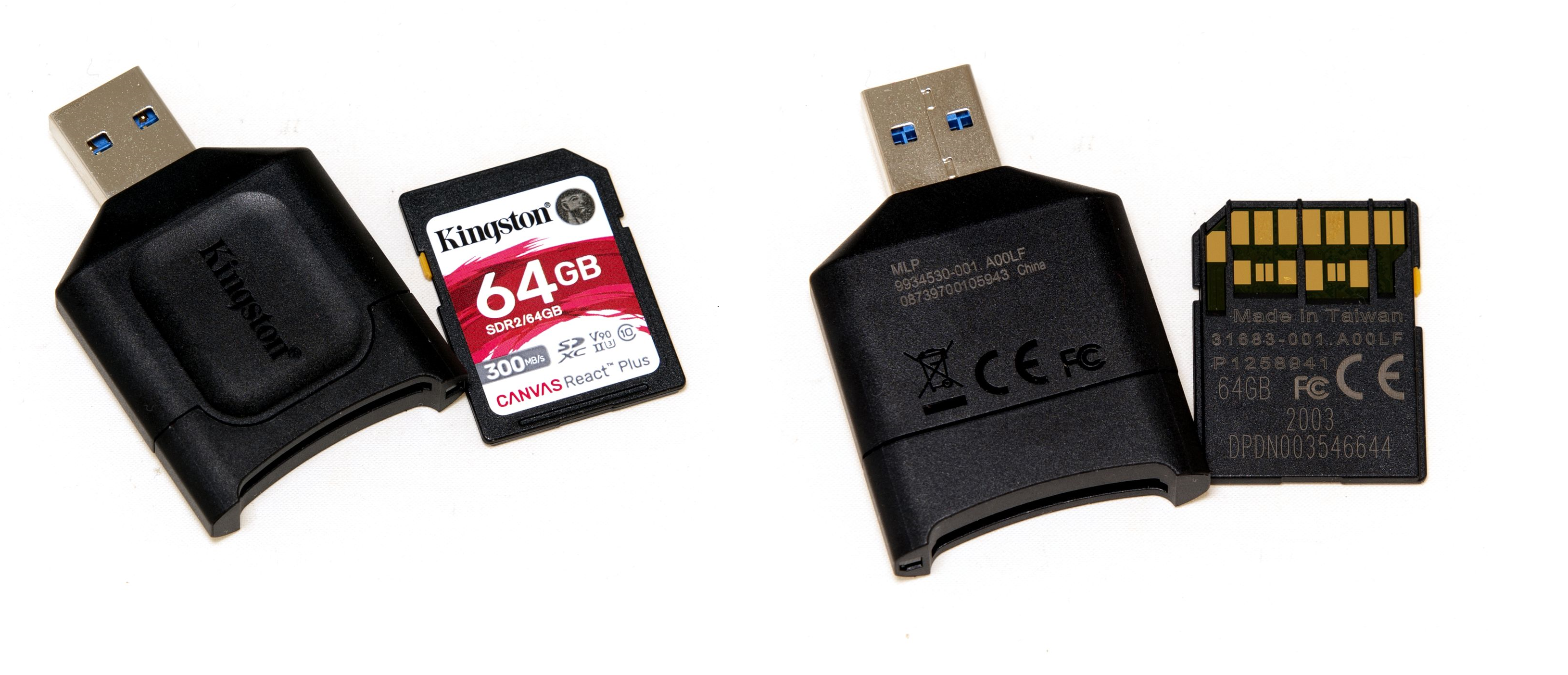
Based on the benchmark results for this card, the focus is on photography and video recording. It is not very suitable for recording in small blocks, and the potential is revealed on blocks of 512 kilobytes and higher. At the same time, it reads fast, starting from 128 kilobytes of blocks, but the strength of Canvas React Plus Kit in the SD form factor is streaming recording (over 250 MB / sec). The speed is stable throughout the entire volume of 64 GB. No matter how much you fill and erase data, Canvas React Plus Kit always gives out 250 MB / s for writing.
The minimum price on Yandex.Market is from 4,300 rubles for June 2020 in Moscow.
Canvas Go! Plus SD 64GB (SDG3 / 64GB)
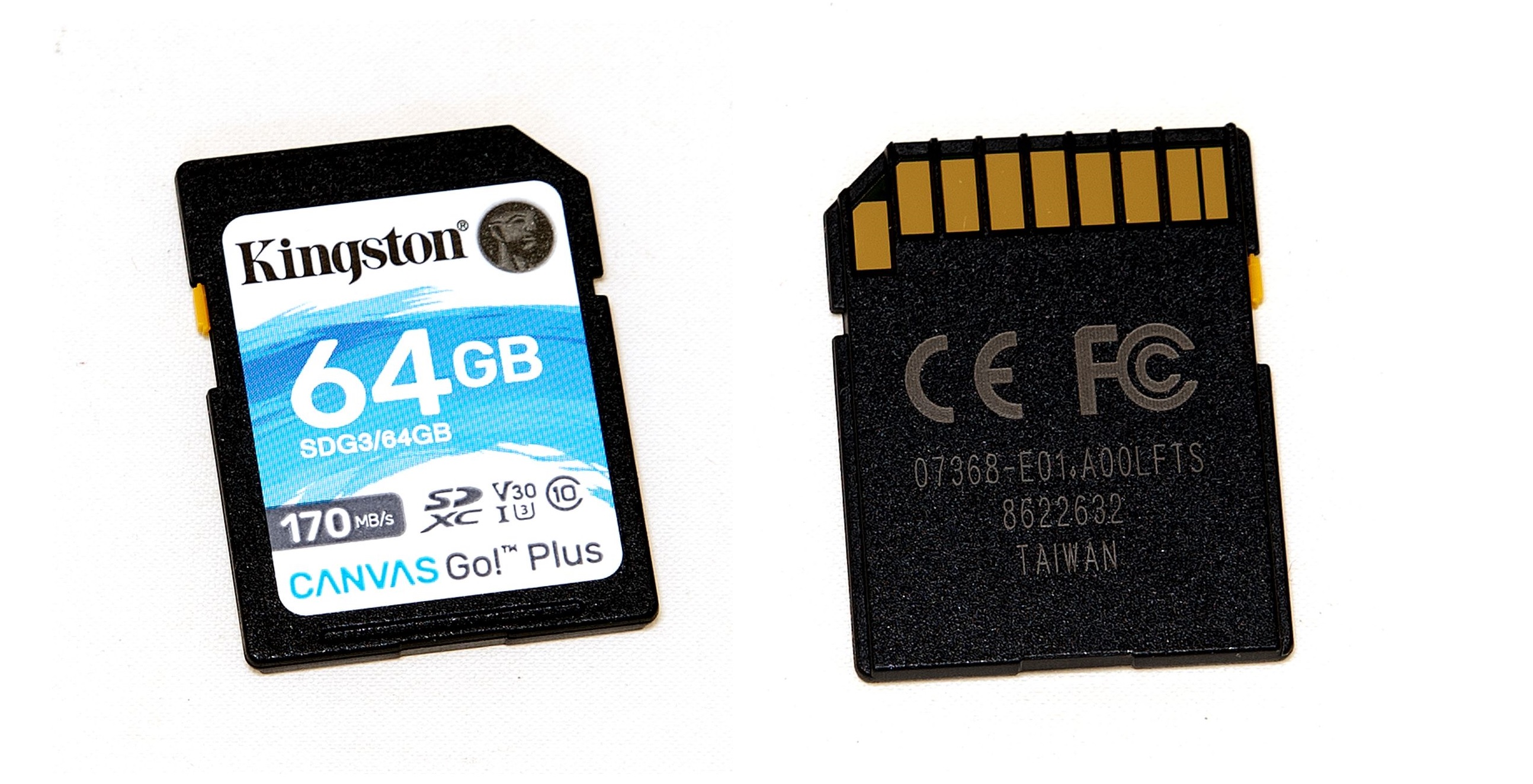
Good price and high performance. Canvas Go! Plus SD with a capacity of 64 GB showed that the available cards can do a lot. Linear reading speed 175-184 MB / sec, writing 70-77 MB / sec. On random operations, it develops from 3.9 to 8.3 MB / sec. In general, Canvas Go! Plus SD is a universal card for fast reading in various blocks and writing. Fits well into any camera or action camera with average bitrate characteristics. The minimum price on Yandex.Market is from 1460 rubles for June 2020 in Moscow. Suitable even for V60 video recording, i.e. perfectly cope with bitrates up to 500-550 Mbps.
The new Kingston Canvas Plus memory cards are now on sale and available at partner stores .
For more information on Kingston Technology products, visit the company's official website .